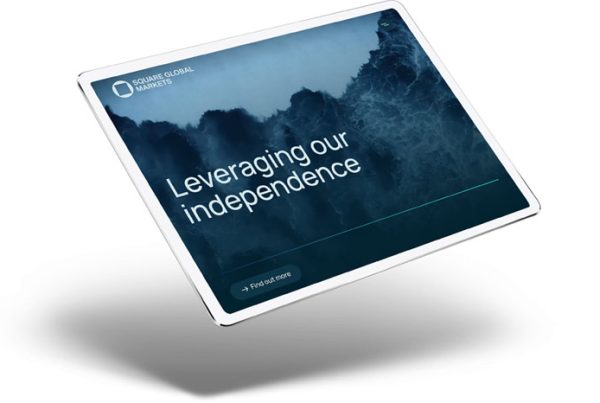Website accessibility is crucial in ensuring that people with disabilities can effectively perceive, understand, navigate, and interact with your online content.
For many individuals with disabilities, navigating the web can be a challenge due to design and development oversights that create barriers, preventing full and equal access. This lack of accessibility does not just limit individuals; it impacts businesses and society as a whole by excluding a diverse group of users and potential contributors.
Website accessibility is essential, ensuring that individuals of all abilities can fully engage with and utilise online content. By implementing website accessibility principles. allowing all visitors access to the content on your website, businesses can be sure that they not only reach a bigger audience but also ensure that they foster an inclusive digital environment. In this post we will discuss, website accessibility and why it matters
Related Articles:
What is website accessibility?
In the context of the websites, accessibility ensures that people with disabilities can seamlessly navigate, understand, and interact with the content on the website. Disabilities that must be taken under consideration are as follows:
- Visual impairments: affect people that have low vision, colour blind or blind
- Auditory Impairments: affect people who are deaf or hard of hearing.
- Motor impairments: affect people that could have a problem with using a mouse or keyboard.
- Cognitive impairments: affect people with conditions such as dyslexia, ADHD, and autism.
- Neurological conditions: conditions such as epilepsy that can be triggered via visual or auditory stimulation.
Key principles to consider
- The website must be operable. Users with any of the disabilities must be able to interact with the interface. This includes accessing interactive elements and input methods.
- An understandable website is the key to making your website accessible. The content and navigation must be easy to understand.
- Websites must be robust enough to work through the different devices and technologies. This also includes the updates needed to support new accessibility features.
- Data and the interface of the website must be presented to users in a way that they can use it, whether through sight, hearing, or other methods.

Accessibility Features
Integrating a comprehensive set of features to cater to various disabilities ensures website accessibility. Every feature addresses specific challenges that are faced by users with impairments to help them navigate, interact, and understand your website.
Text and Visual Content
Creating alternative text for images is crucial for website accessibility, especially for visually impaired visitors who rely on screen readers. This helps them understand the content of the images on your website. Additionally, this practice is beneficial for Search Engine Optimisation, as it helps search engines understand the content of your images and improve your site’s ranking. It’s also important to ensure that your website is compatible with Text-to-Speech software, which is essential for visitors with visual impairments and reading disorders. Allowing visitors to adjust the text size and contrast can significantly improve readability for those with low vision. Finally, providing captions for videos and audio descriptions can help make the content accessible to users who are deaf or have hearing difficulties.

Navigational Features
Keyboard navigation is essential for users with motor disabilities who rely on keyboard shortcuts to navigate websites. It’s important to ensure that all interactive elements, such as forms, links, and other controls, are accessible via keyboard. This allows users to quickly access the main webpage content by skipping repetitive content, especially navigation menus. This feature is particularly helpful for those using screen readers or keyboards. Consistent navigation throughout your site also helps users with cognitive disabilities understand and remember how to move around your website. Predictable site layouts reduce confusion and make the browsing experience smoother.
Interactive Elements
Forms need to be accessible by labeling each field clearly, providing easy-to-understand error messages, and including instructions that help users complete the form accurately. For those who may make mistakes while filling out forms or performing actions, it is essential to have clear error identification and constructive feedback to rectify errors without any frustration. Menus should be designed to be operable by both mouse and keyboard, with clear and distinct options that are easy to select. Dropdown menus, in particular, should stay open long enough for users to make a selection easily.
By using these features in your web design and web development practices, you are not only enhancing the user experience for individuals with disabilities but also boosting your site’s SEO performance. These accessibility features are not just additions to your website; they are integral components that reflect your commitment to inclusivity in digital marketing and brand representation. Implementing these can help transform your site into a model for accessibility, demonstrating your role as a leader in the web development community
Accessibility Tools
Accessibility tools can help you during web development and maintenance of an accessible website. Let’s explore several tools that will help you with your development and digital marketing strategy to make sure that your website meets accessibility standards.
Automated Testing Tools
- WAVE (Web Accessibility Evaluation Tool): This tool provides visual feedback about the accessibility of your web content by highlighting potential problems and offering recommendations. It’s effective for quick checks and detailed reports.
- Lighthouse: Integrated into Google Chrome’s DevTools, Lighthouse is an open-source, automated tool for improving the quality of web pages. It checks accessibility, among other things, and provides clear, actionable insights.

Screen Readers and Simulation Tools
- NVDA (NonVisual Desktop Access): An open-source screen reader for Windows, NVDA helps developers experience their websites as visually impaired users would, identifying gaps in the user experience.
- VoiceOver: Built into all Mac and iOS devices, VoiceOver is a gesture-based screen reader that lets users hear descriptions of everything happening on their screen, from battery level to who’s calling.
Colour Contrast Analyzers
- Colour Contrast Analyzer: This tool allows you to check the colour contrast of text, graphic elements, and visual components as defined by WCAG (Web Content Accessibility Guidelines). Ensuring high contrast is crucial for users with colour vision deficiencies. Colour Contrast Analyzer
- WebAIM Color Contrast Checker: An easy-to-use online tool to quickly evaluate the contrast of colours on your website, ensuring that they meet accessibility standards.
Manual Testing and User Feedback
- User Testing with Real Users: While automated tools provide a baseline check, nothing replaces the insights gained from real-world testing. Engaging users with disabilities in the testing process can uncover nuanced usability challenges.
- Feedback Tools: Incorporating tools like Usabilla or Hotjar can help gather real-time user feedback about accessibility issues, which can be invaluable for iterative improvements.
Development and Debugging Tools
- Accessibility Insights: Developed by Microsoft, this tool offers comprehensive testing solutions, including automated checks and a manual testing guide, to ensure compliance with accessibility standards.
- Totally Tool: A simple toolbar that overlays your website to visually highlight components like headings, landmarks, and focusable elements—key for ensuring that your site structure is accessible.
Including these tools in your web development process ensures legal compliance and enhances user experience for a wider audience. This inclusive approach improves usability, boosts your digital marketing efforts, and positively impacts your brand’s e-commerce strategy and overall branding.
Why do you need your website to be accessible:
Accessibility is not just about increasing your audience – it also impacts your branding and online presence. By ensuring your site is accessible, you demonstrate inclusivity and commitment to all potential clients, thereby enhancing your branding efforts. Furthermore, accessible sites tend to rank better in search results, improving your digital marketing strategy.
Websites that prioritise accessibility are not only following a trend—they are setting the standards for future web development and design. As an award-winning creative branding, web design, and web development agency based in London, we understand the importance of creating websites that everyone can use. Our commitment to excellence in digital marketing and web development ensures that your business receives the visibility and functionality it deserves, making your digital presence as inclusive as it is impressive.
By integrating these principles and features into your website, you can enhance user experience, opening your business to a wider and diverse audience. This commitment to accessibility should be a core component of your digital strategy, reinforcing the values of your brand and expanding your market potential.


